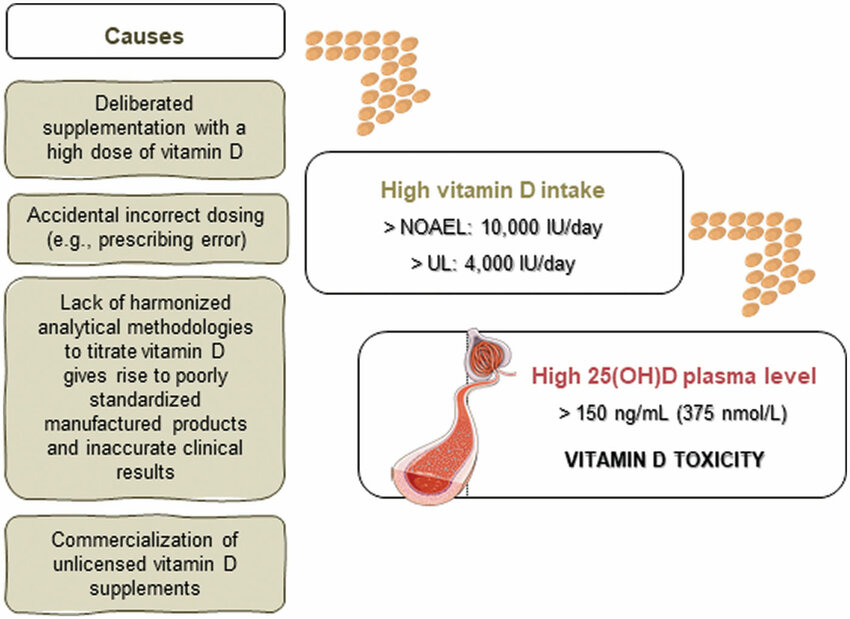In an age of wellness influencers, fitness trends, and the growing availability of health supplements, it is tempting to believe that more nutrients equal better health.
The allure of mega-dose vitamins, minerals and highly concentrated powders can make people feel like they’re doing everything possible to optimise their well-being. However, the reality is that the body functions on balance, and excessive supplementation can do more harm than good.
As a product developer I am often asked why I don’t include larger doses in my products. The answer lies in my deep understanding of proper dosing, which is not only a matter of science but one of ethical responsibility.
My dosing consciousness is the cornerstone of my approach to supplement formulation, ensuring that every product I create is effective, safe, and aligned with the body’s natural requirements. Here’s a closer look at why more isn’t always better and the importance of thoughtful dosage practices in supplement formulation.
This article explores the dangers of over-supplementation, the reasons behind its growing prevalence, and how to adopt a safe, effective approach to supplement use.
Understanding Over-Supplementation: A Subtle but Serious Problem
Over-supplementation is the excessive intake of vitamins, minerals, or other nutrients, beyond what the body needs or can safely handle. Unlike dietary nutrients consumed through whole foods, supplements deliver concentrated doses, which, when taken in excess, can overwhelm the body’s natural regulatory mechanisms.
The body has two key pathways to manage nutrient intake:
- Absorption Regulation: The gastrointestinal tract limits how much of a nutrient is absorbed based on physiological needs.
- Excretion: Excess water-soluble vitamins (like Vitamin C and B-complex vitamins) are excreted through urine, while fat-soluble vitamins and minerals are stored in the body.
These mechanisms are not foolproof. Chronic overconsumption can lead to toxic buildup or disrupt the delicate nutrient balance essential for overall health.
Risks of Over-Supplementation
1. Vitamin Toxicity: When Essential Becomes Excessive
Vitamins are essential for health, but their benefits come with upper limits. Fat-soluble vitamins (A, D, E, and K) are particularly prone to toxicity because they are stored in the liver and fatty tissues, accumulating over time.
- Vitamin A Toxicity (Hypervitaminosis A): Symptoms include headaches, dizziness, nausea, and, in severe cases, liver damage, bone thinning, or birth defects during pregnancy.
- Vitamin D Toxicity: Excess Vitamin D increases calcium absorption, which can lead to hypercalcemia, resulting in kidney stones, vascular calcification, or even cardiac arrhythmias.
Even water-soluble vitamins, often perceived as “safe,” can cause side effects in high doses. For example:
- Vitamin C Overdose: May lead to gastrointestinal distress, including diarrhea and nausea, or increase the risk of kidney stones.
- Vitamin B6 Overdose: Chronic high doses can cause nerve damage, leading to symptoms like tingling or numbness.
2. Mineral Overload: Heavy Metals Aren’t the Only Concern
Minerals are required in small amounts for physiological functions, but even small deviations can lead to issues.
- Iron Toxicity: Common in individuals who supplement without checking their iron levels. Excess iron can lead to oxidative stress, damage to tissues, and conditions like hemochromatosis.
- Calcium Overdose: Excess calcium can disrupt magnesium absorption and increase the risk of kidney stones. Paradoxically, it may also weaken bones by interfering with Vitamin D’s role in calcium metabolism.
- Zinc Overdose: High zinc intake can suppress immune function, lower HDL cholesterol (the “good” cholesterol), and inhibit copper absorption, causing secondary deficiencies.
3. Nutrient Imbalances: How “One Too Much” Affects Others
Nutrients don’t work in isolation—they exist in a network of interdependencies. Over-supplementing one nutrient can disrupt this balance.
- Calcium and Magnesium: Excess calcium can impair magnesium absorption, leading to symptoms like muscle cramps, fatigue, and heart palpitations.
- Zinc and Copper: Zinc competes with copper for absorption. Chronic high zinc intake can deplete copper stores, leading to anemia and weakened immunity.
- Iron and Vitamin E: Excess iron increases oxidative stress, which can deplete Vitamin E levels, diminishing its antioxidant effects.
4. Strain on Organs: The Hidden Stress
The liver and kidneys are responsible for metabolizing and excreting excess nutrients. Over time, high supplement doses can place unnecessary stress on these organs, especially in individuals with pre-existing conditions like liver disease, kidney dysfunction, or diabetes.
Why Over-Supplementation Happens: Understanding the Appeal
1. The Allure of “More is Better”
Health-conscious individuals often believe that if small amounts of a nutrient are good, larger amounts must be better. This belief is amplified by marketing strategies promoting “mega-doses” as solutions to fatigue, aging, or disease prevention.
2. Fear of Deficiencies
People concerned about their diet or diagnosed with a deficiency may resort to supplements without understanding the appropriate dosage. The fear of missing out on health benefits further drives excessive use.
3. Lack of Knowledge and Guidance
Many consumers lack access to reliable information about safe nutrient levels or potential interactions. Self-prescribing supplements without medical consultation exacerbates the problem.
4. Biohacking Culture
The trend of “biohacking” encourages experimentation with high doses of supplements in pursuit of peak performance, often ignoring the risks.
Safe Supplementation Practices: Striking the Right Balance
1. Get Tested
Before starting any supplement, consult a healthcare professional and test for deficiencies. This ensures supplementation is targeted and necessary.
2. Follow Evidence-Based Guidelines
Stick to the Recommended Dietary Allowance (RDA) and avoid exceeding the Tolerable Upper Intake Level (UL) unless advised by a professional.
3. Prioritise Whole Foods
Supplements are meant to fill gaps in your diet—not replace it. Nutrients in whole foods are accompanied by synergistic compounds like fiber, antioxidants, and phytonutrients, which enhance absorption and effectiveness.
4. Be Cautious with Stacking
Avoid combining multiple supplements without understanding their interactions. For example, a multivitamin combined with high-dose single nutrients may lead to accidental over-supplementation.
5. Reassess Regularly
Nutrient needs change over time due to factors like age, health status, and lifestyle. Periodically reassess your supplement regimen with a healthcare provider.
Conclusion: The Balance Between Benefit and Risk
Supplements are a powerful tool in modern health, capable of addressing deficiencies, optimizing performance, and supporting long-term well-being. However, they must be used judiciously. Over-supplementation is a growing problem with real consequences, from nutrient imbalances to organ stress and interactions with medications.
The best approach is to prioritise a nutrient-rich diet, use supplements as targeted solutions, and always seek professional guidance. Remember: when it comes to supplements, more is not always better—balance is the ultimate key to health.









Leave a Reply